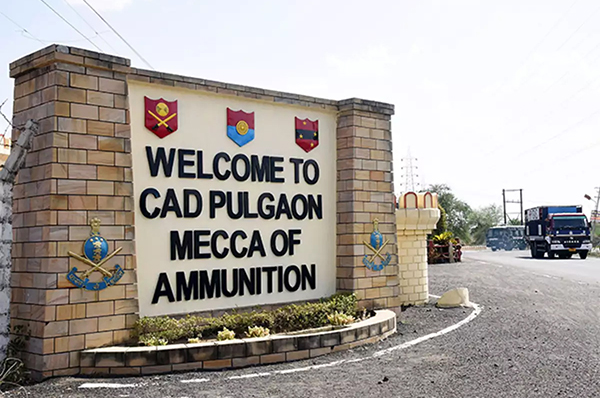After having lost ammunition worth several hundred crore over the past years in various accidents, the Army has drawn up plans to upgrade the security and fire fighting infrastructure at 16 major ammunition depots across the country.
“Increased security threats and recent incidents of fire in ammunition depots warrant an immediate upgradation of the existing archaic security and fire fighting infrastructure currently found in all the ammunition installations of Ordnance,” states an expression of interest (EOI) issued this week by the Directorate General of Ordnance Services seeking project management consultancy from suitable agencies.
“There is a need to acquire force multipliers in terms of modern security and fire fighting systems, which would incorporate modern methods of ensuring security and fire fighting and will be potent to ward off any threat,” the EOI adds.
The Army has 16 major ammunition depots, with the Central Ammunition Depot (CAD) at Pulgaon in Maharashtra that comes directly under the command of Army Headquarters, being the mother depot.
CAD receives all ammunition from indigenous and foreign sources and then issues it to 15 Field Ammunition Depots (FADs) which sustain fighting formations within the geographical area of supply allotted to them.
These depots hold all kind of bullets, grenades, bombs, shells, mines, rockets and missiles used by the army. Some of the Air Force’s ammunition storage facilities are also co-located with these depots.
Given the explosive nature of stores that they hold, ammunition depots are located and designed as per specific technical norms to ensure security and safety of the establishment, manpower deployed therein as well as the surrounding areas. The locations depend upon the operational and logistic considerations.
The security and fire fighting infrastructure include securing the perimeter and controlling access into the depot by means of armed guards, walls or fences, watch towers and CCTV cameras, technical officers, explosives inspection and disposal experts, keeping the premises clear of vegetation and wild growth, automatic fire detection and sprinkler systems, specialist fire fighting vehicles and equipment, safety lanes and static water tanks.
Every depot has an emergency plan and standard operating procedures in place to deal with any accident, explosion or fire. Technical officers and explosives experts are also required to inspect and audit the stores as well as handling storage procedures periodically to identify life expired or defective ammunition that can trigger an accident.
Over the past two decades, there have been several instances of fire breaking out in some ammunition depots, not only destroying a large quantity of ammunition and explosives, but also resulting in the loss of human lives.
After a massive fire at the Ammunition Depot, Bharatpur in 2000, the Army had embarked upon a major security and safety modernisation project plan to improve the storage infrastructure at all its depots. This included new design for ammunition sheds, converting temporary shelters into permanent buildings, better packing and stacking facilities and a review of the safety standards and procedures.
The new modernisation project being planned will require a fresh look at the regulations of the Ministry of Defence’s Storage and Transport of Explosive Committee, which are ratified by Defence Research and Development Organisation’s Centre for Fire, Explosive and Environment Safety, redesigning buildings and storage structures, state-of-the art inspection and testing facilities, automation, installation of contemporary warning and fire fighting systems.


















